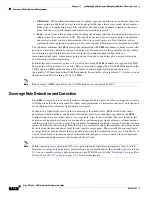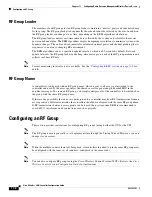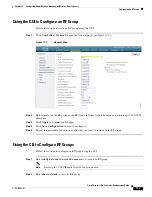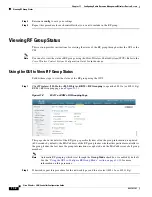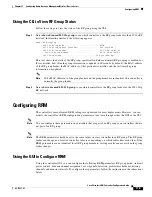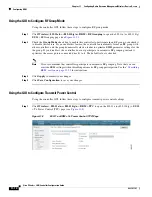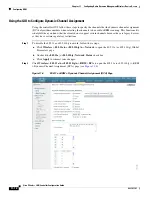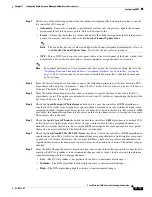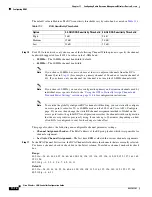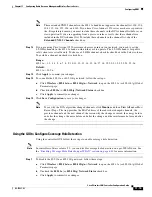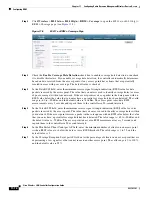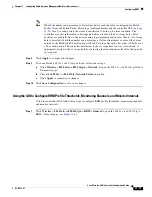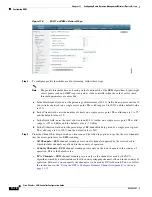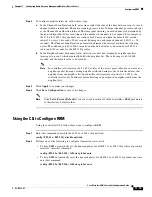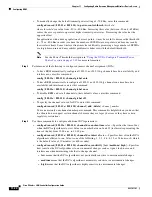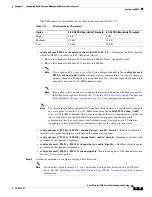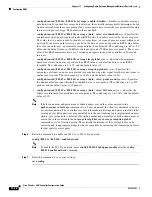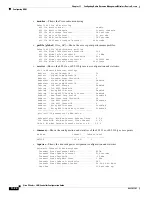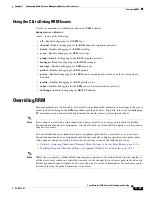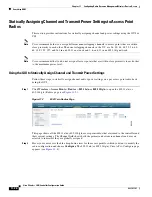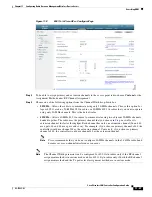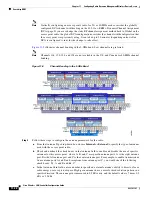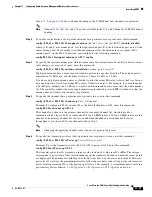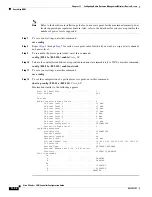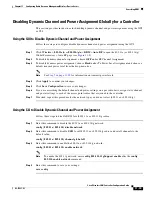
11-18
Cisco Wireless LAN Controller Configuration Guide
OL-17037-01
Chapter 11 Configuring Radio Resource ManagementWireless Device Access
Configuring RRM
Figure 11-6
802.11a > RRM > General Page
Step 2
To configure profile thresholds used for alarming, follow these steps.
Note
The profile thresholds have no bearing on the functionality of the RRM algorithms. Lightweight
access points send an SNMP trap (or an alert) to the controller when the values set for these
threshold parameters are exceeded.
a.
In the Interference field, enter the percentage of interference (802.11 traffic from sources outside of
your wireless network) on a single access point. The valid range is 0 to 100%, and the default value
is 10%.
b.
In the Clients field, enter the number of clients on a single access point. The valid range is 1 to 75,
and the default value is 12.
c.
In the Noise field, enter the level of noise (non-802.11 traffic) on a single access point. The valid
range is –127 to 0 dBm, and the default value is –70 dBm.
d.
In the Utilization field, enter the percentage of RF bandwidth being used by a single access point.
The valid range is 0 to 100%, and the default value is 80%.
Step 3
From the Channel List drop-down box, choose one of the following options to specify the set of channels
that the access point uses for RRM scanning:
•
All Channels
—RRM channel scanning occurs on all channels supported by the selected radio,
which includes channels not allowed in the country of operation.
•
Country Channels
—RRM channel scanning occurs only on the data channels in the country of
operation. This is the default value.
•
DCA Channels
—RRM channel scanning occurs only on the channel set used by the DCA
algorithm, which by default includes all of the non-overlapping channels allowed in the country of
operation. However, you can specify the channel set to be used by DCA if desired. To do so, follow
the instructions in the
“Using the GUI to Configure Dynamic Channel Assignment” section on
.

